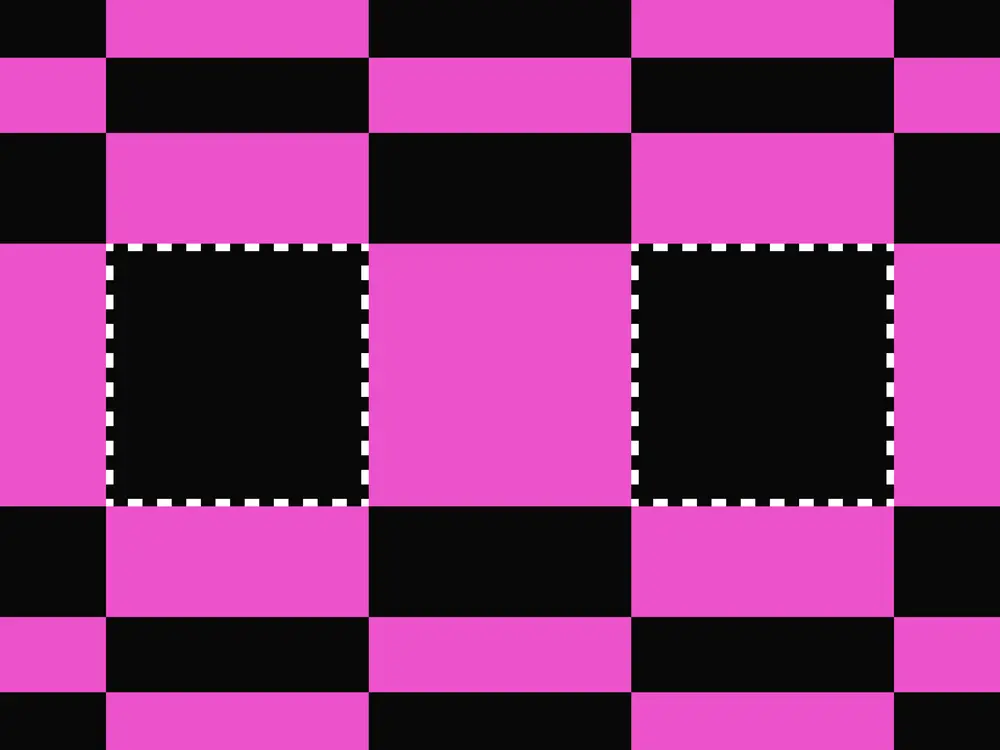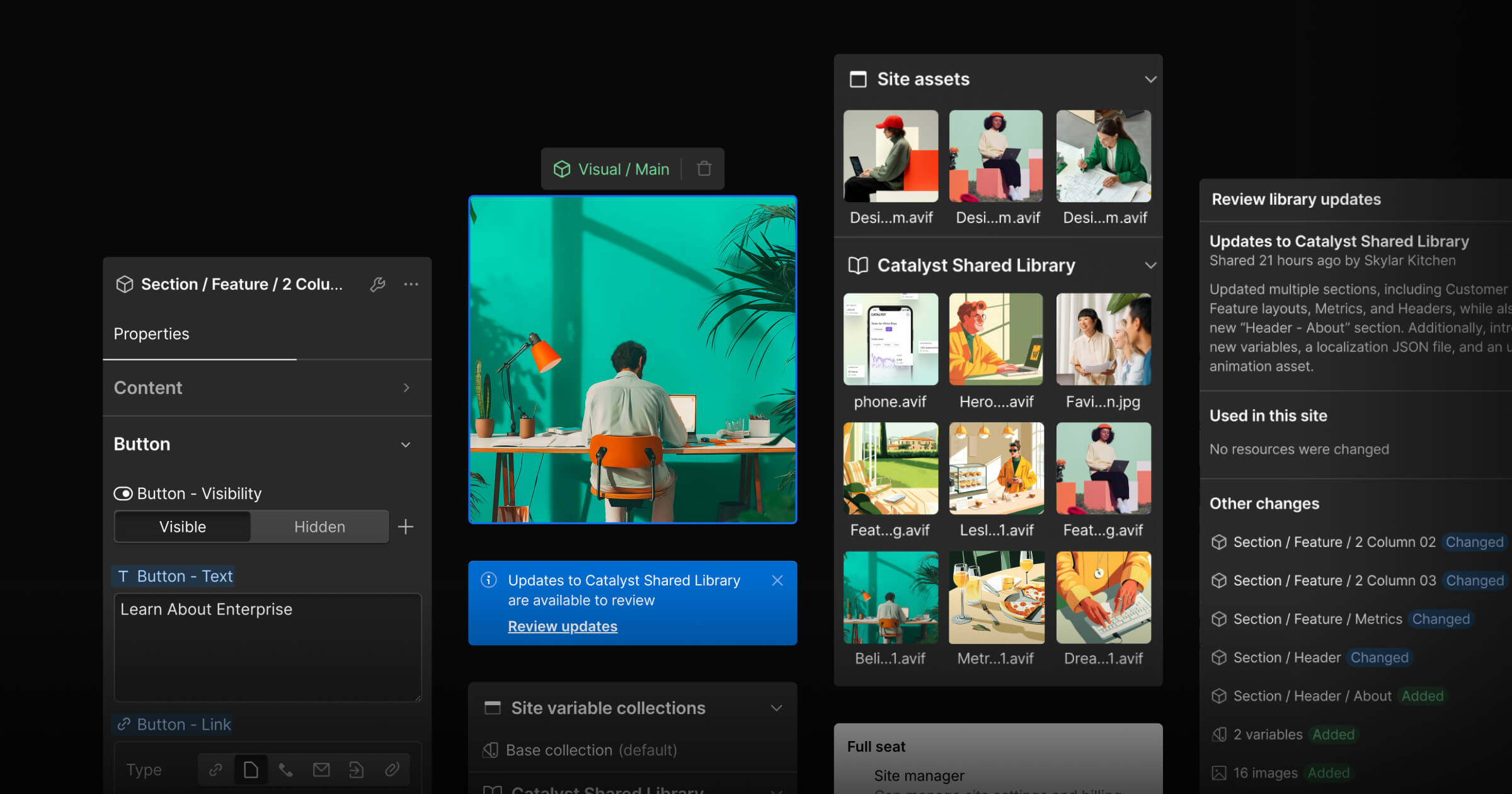As design systems continue to evolve in the decade ahead, organizations will need to continue to establish a strong foundation to unlock scale.
This spans the processes driving these systems, the people building them, and the strategies implemented to continuously improve, iterate, and refine them.
To look at the future and potential of design systems, we asked Dan Mall, founder of Design System University, Diana Mounter, Head of Design at Github, Brad Frost, author of Atomic Design, and Jon “Q” Quach, frontend engineer, here at Webflow, how they foresee artificial intelligence (AI) and emerging tech at large will impact and shape design systems in the future. Their answers, as you’ll read, run the gamut — from the business impact it can have, where they are witnessing interesting applications already, and how AI may start transforming the roles of designers and developers.
AI can unlock even greater efficiencies
“In many ways, I think AI is what we’ve been missing and waiting for when it comes to design systems.”
— Dan Mall, founder of Design System University
There is little doubt amongst our interviewees that there are certain things that artificial intelligence (AI) already handles well, and will likely get better at quickly. Unsurprisingly, handling repetitive tasks with efficiency is high on the list. Diana Mounter says that it will “enable you to do some…tedious tasks faster, and spend more time exploring those blue sky solutions.”
Mounter sees AI as a significant enabler in the design systems space. She anticipates that AI tools will accelerate the building and development of design systems, making it faster to generate new layouts and designs.
“You can imagine that it's just going to get faster to build with systems and create new layouts and explorations and really generate a lot of different designs very quickly.”
— Diana Mounter, Head of Design, Github
For Brad Frost, one of the main selling points of design systems is that they improve efficiency by freeing up teams to work on more challenging problems. So where does that efficiency and increased velocity come from? He explains, “Well, in large part by freeing up human beings’ brains and hands to focus on solving more interesting problems than ensuring a button is 44px tall instead of 43px tall.”
The untapped potential of integrating AI into design systems
Frost sees a future where AI becomes a consumer of design systems. He envisions AI not just as a tool within design systems but as an entity that can wield a design system effectively. This could involve AI making informed decisions based on the design system's guidelines and standards, as well as the capability to generate source code for new components. His observations point towards a future where AI significantly contributes to the efficiency of design production, creating a synergy between human creativity and machine scalability.
Furthermore, our experts believe the integration of AI with existing design tools can be a pivotal enhancement for driving greater efficiencies. For example, AI's ability to quickly process and apply design system rules and standards could drastically reduce the time spent on routine tasks like code generation, component resizing, and style consistency checks. These types of integrations can pave the way for a future where AI can learn and adapt to an organization's specific design language — further personalizing and optimizing the design process.
Where AI is already playing a role in design systems
Jon “Q” Quach highlighted how AI can be used to not only perform repetitive tasks but also to establish foundational elements of a design system. He emphasizes the advancements made in AI-driven design tools, which exemplify AI's capability to construct complex user interfaces from basic text prompts:
“You tell it, I want this particular look, or my [design system] currently looks like this, where it has these particular colors, these values for spacing, please generate for me the base level values for the spacing scale, typography scale, [etc].”
— Jon Quach, Staff Frontend Engineer, Webflow
By interpreting and executing design ideas, AI tools can start to simplify the process of UI creation, marking a significant leap in design efficiency. Such AI-driven systems can rapidly generate the structural underpinnings of design elements, including spacing, typography, and color scales.
This automated generation of components can drastically reduce the time and effort required for initial design setup, allowing designers to focus on more nuanced and creative aspects of their work.



















Evolving design systems
In our ebook, learn why experts are investing in scalable design systems and how they are thinking about the future of design systems.
AI as a co-pilot: a complement to human creativity
While our experts cited the many recent advancements in generative AI that can handle simple requests with incredible speed — think platforms like Midjourney and DALL-E — they note that there’s plenty of room for innovation before these types of emerging tech can handle the nuance and complexity of contemporary design requirements and consumer expectations.
Dan Mall explains that while these types of systems can certainly come up with hundreds or even thousands of drawings/paintings/sketches in the time it would take a human to do just one at high-fidelity, AI has not reached the point where it can judge what’s good and what’s not, what might be emotionally resonant with a human audience, and what might just be junk.
“To date, AI has little criteria on understanding what’s meaningful to me, or you, or us. Because, as humans, we’re really bad about understanding what’s meaningful to us, and why. We laugh and cry at the oddest things. We sometimes find pleasure in the mundane, and we’re sometimes apathetic at the pleasurable.”
— Dan Mall, Founder, Design System University
So while AI can produce a multitude of concepts quickly, it is the human designer's task to sift through these ideas, refine them, and infuse them with quality and originality. “That’s exactly what generative AI is great at: remixing commoditized data into endless possibilities. And it’s even better than humans at transforming that data into combinations that may not have occurred to us,” he explains.
He concludes by explaining that if teams embrace AI as a co-pilot, “we can let it take care of the menial task of interface building — essentially, combining common components into a layout — with humans’ roles becoming the discernment of which interfaces best solve the problems in front of us.”
How designers’ and developers’ roles will start to transform
“How many millions of hours of wasted human life energy is going into rebuilding a date picker? It's a tragedy.”
— Brad Frost, author ofAtomic Design
The roles of designers and developers will undoubtedly change in the coming months and years as emerging technology like generative AI continues to improve. For those willing to learn to embrace AI as a co-pilot — but retain ownership of the human-level decisions around quality, for example — Frost believes a positive shift will take hold. He foresees the jobs of designers and developers becoming ones that are less monotonous and filled with more worthwhile challenges.
At the end of the day, the responsibility lies with designers and developers to guide new technologies like AI in a direction that uplifts the human experience, respects ethical boundaries, and nurtures creativity. For our experts, AI is not the end of creativity in design systems. Rather, it is a new beginning, offering a path to explore uncharted territories and new possibilities for the next generation of design at scale.
Design systems must continuously evolve with the market
As teams look toward the future and explore new and nuanced methods that can enhance how design systems are created, managed, and maintained, it’s vital to recognize the expansive potential of these systems — especially when coupled with emerging tech. Beyond their immediate applications, design systems are poised to provide a critical lever to deliver powerful digital experiences — marking a significant shift in how creativity is facilitated by technology and how we ultimately shape the future of design and development.
To hear more from these experts and read further on the strategies for building design systems and what’s in-store for the future, download our free ebook, Evolving Design Systems.
































